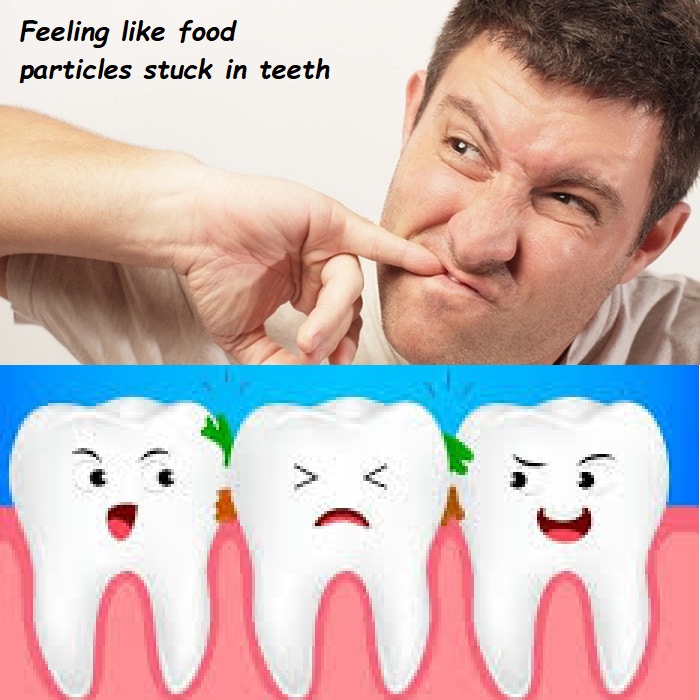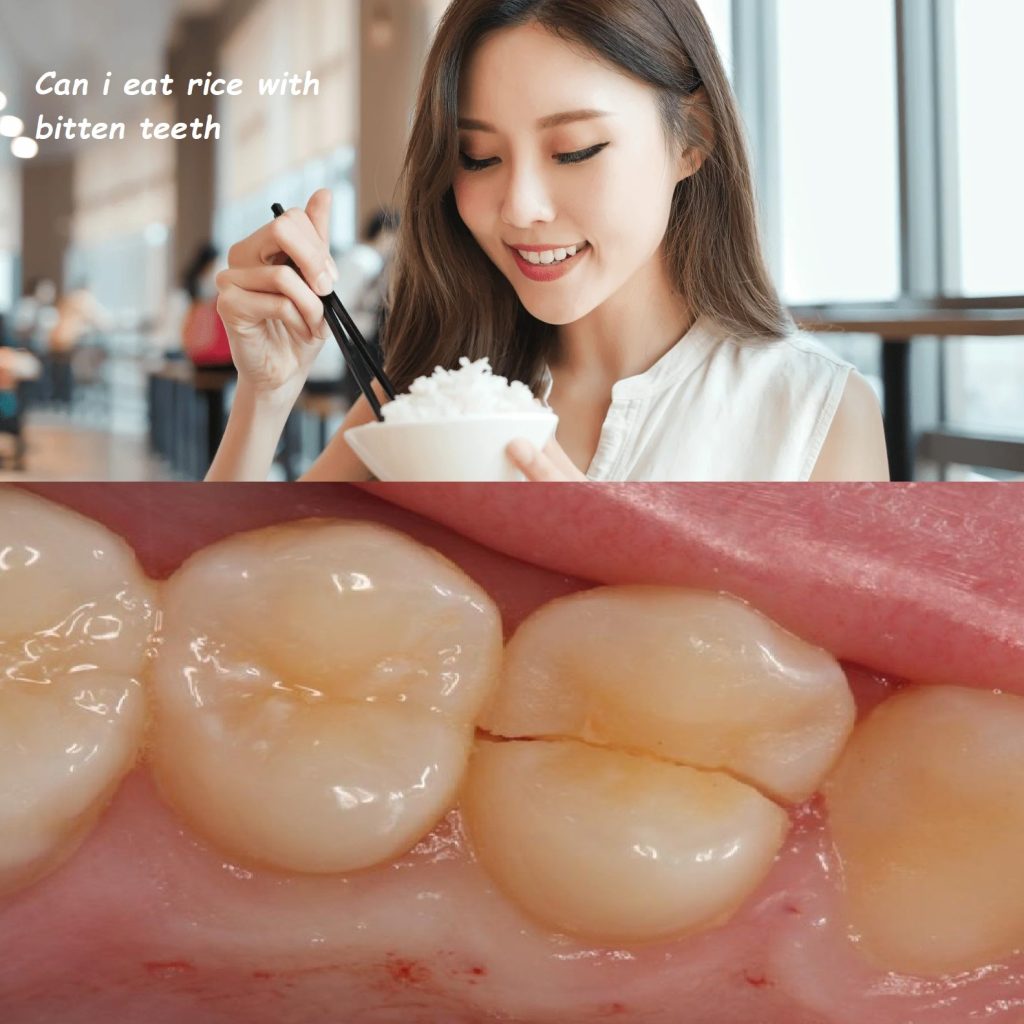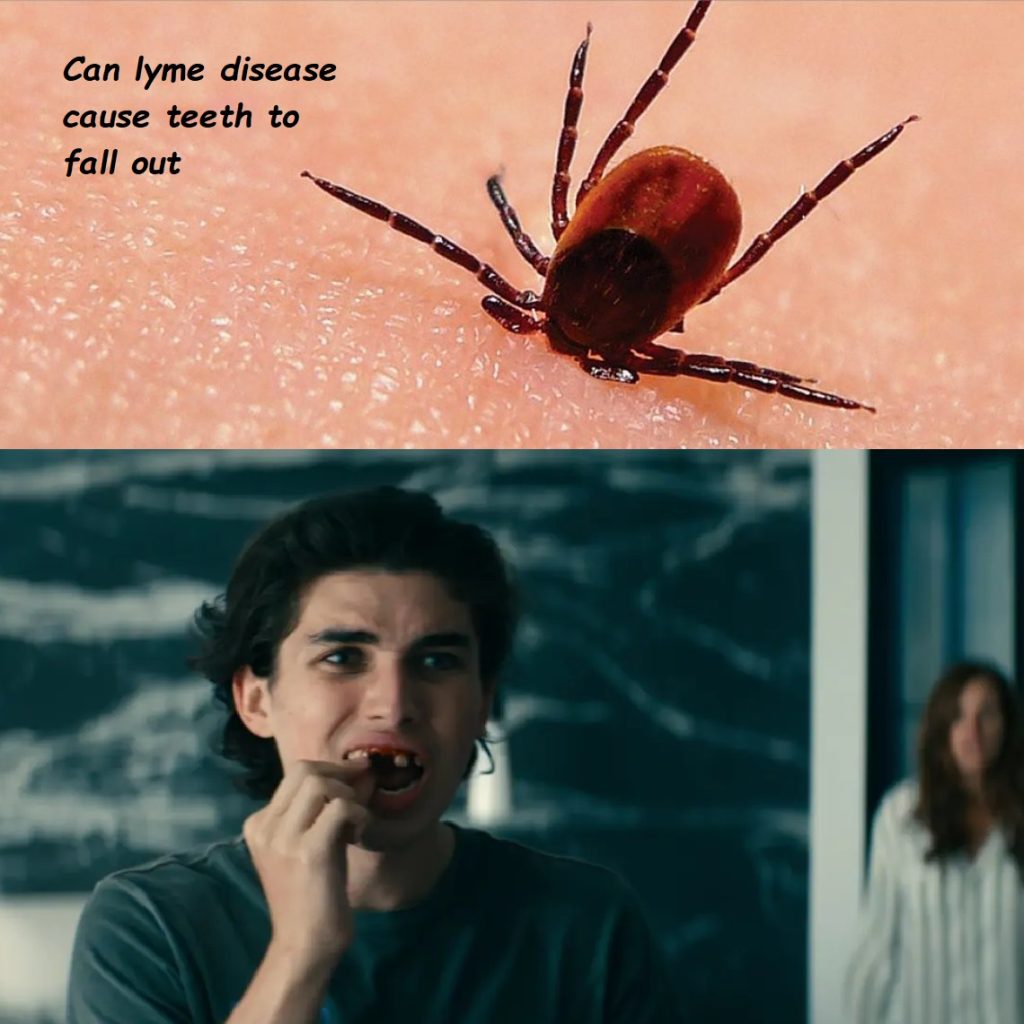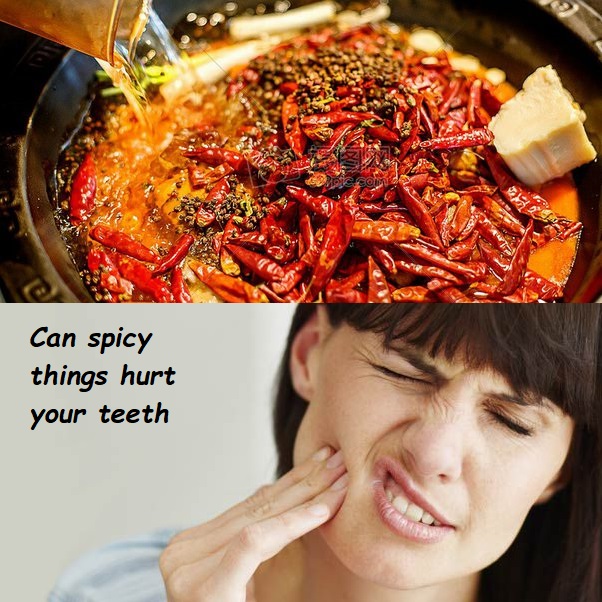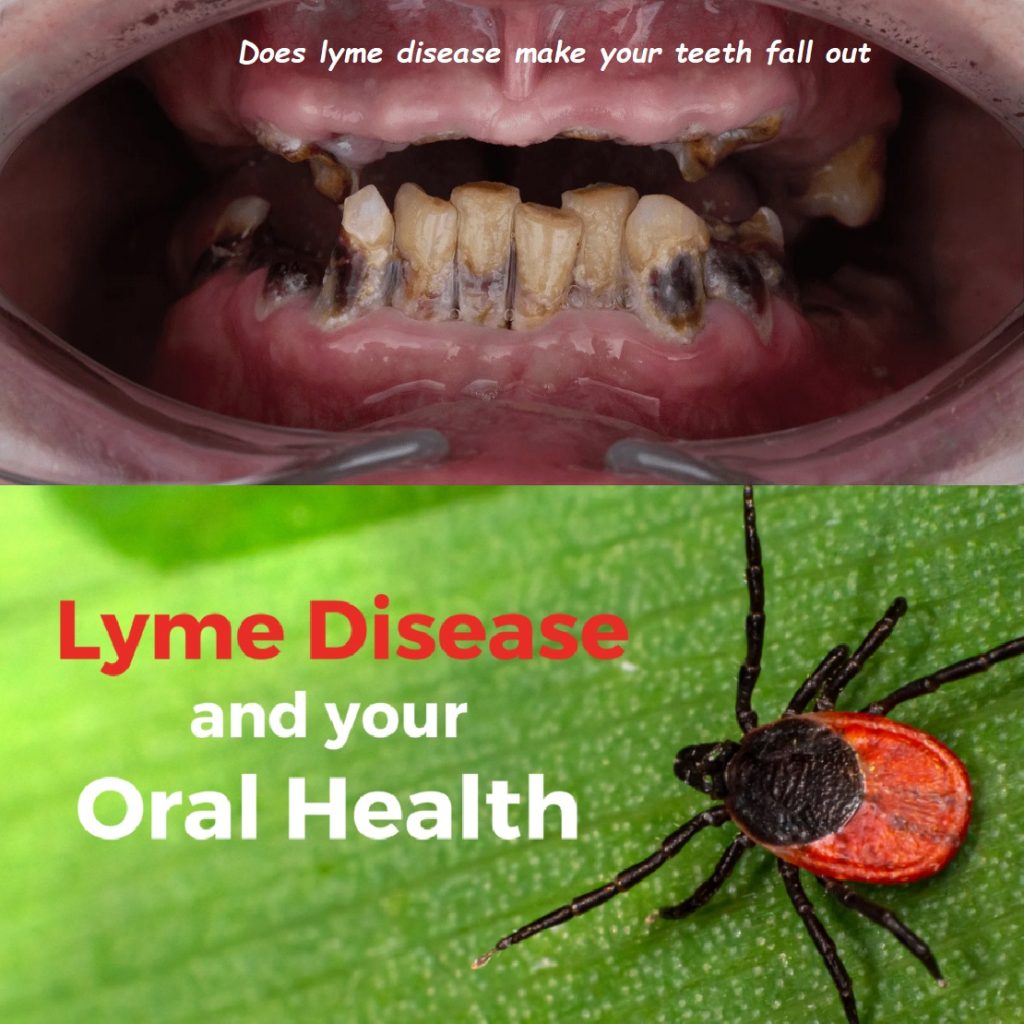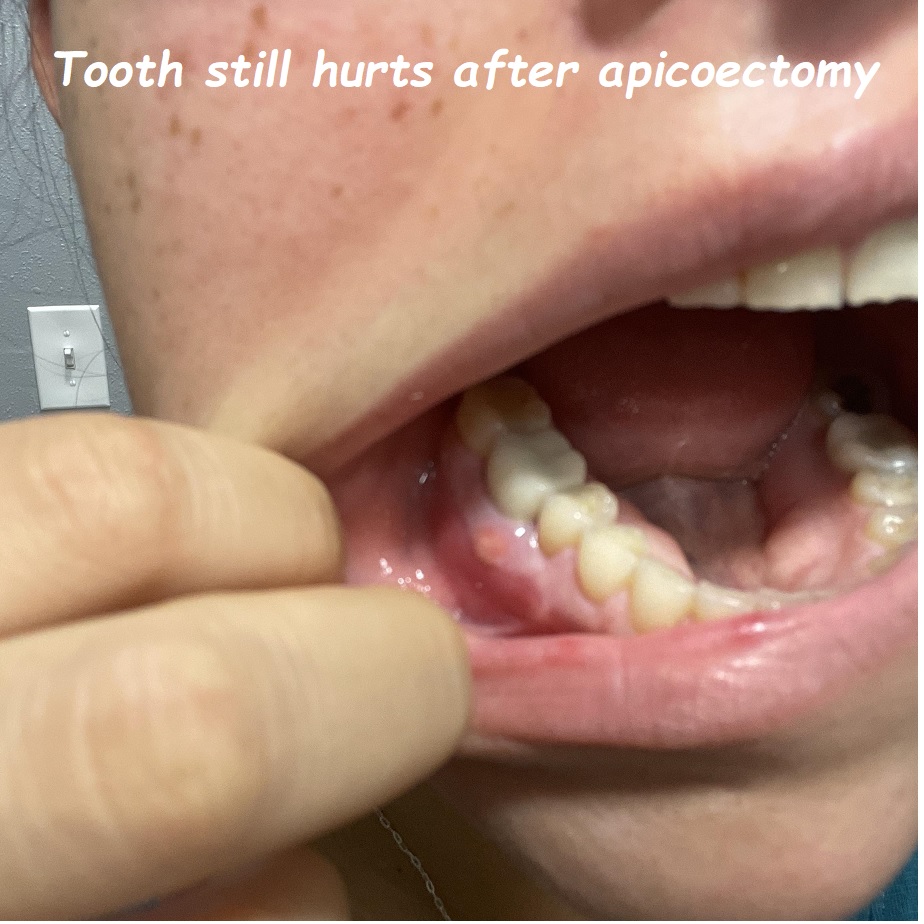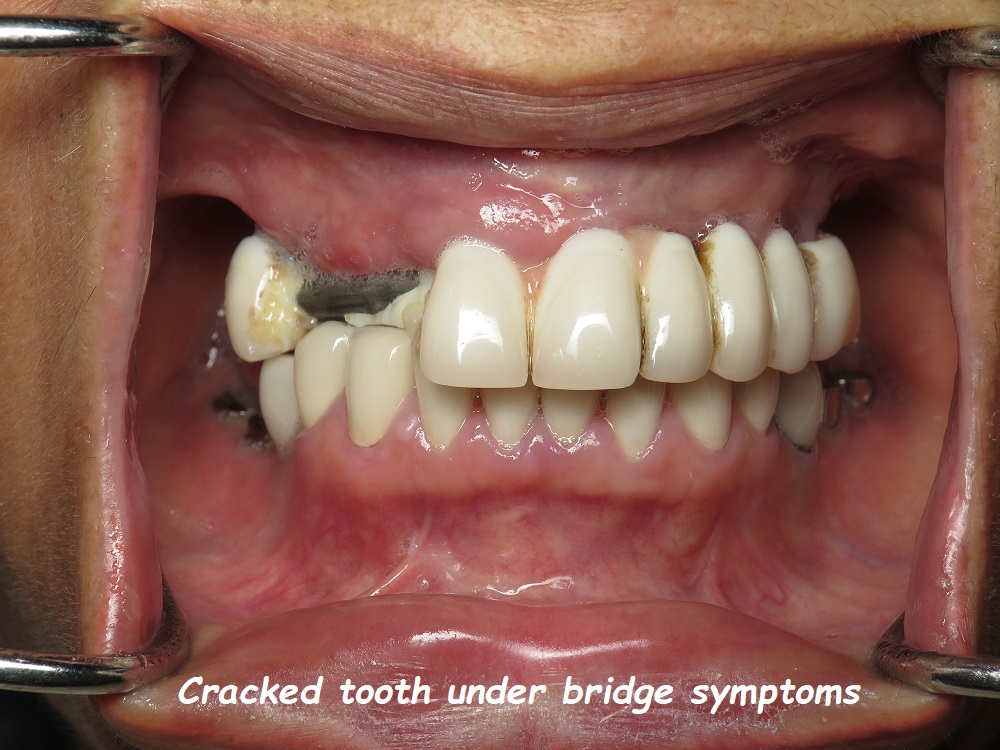exposed tooth root
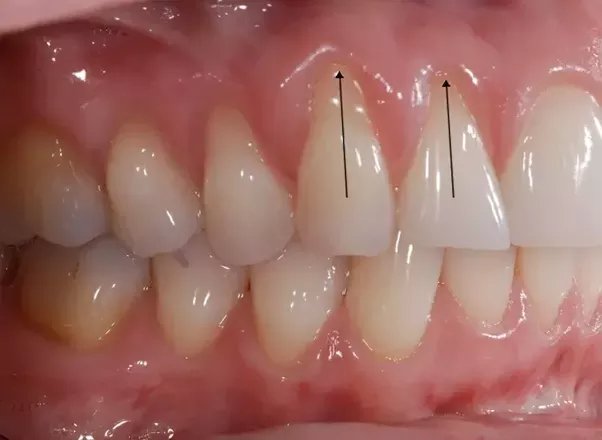
Understanding Exposed Tooth Roots: Causes, Symptoms, and Treatment Options
An exposed tooth root is a dental condition that can lead to significant discomfort and serious oral health issues if not addressed promptly. This comprehensive guide will explore the causes, symptoms, and available treatments for exposed tooth roots, providing valuable information for those experiencing this condition or seeking to prevent it.
What is an Exposed Tooth Root?
The roots of your teeth are normally protected by the gums and the alveolar bone. When the gum tissue recedes or the bone deteriorates, the tooth root can become exposed. Unlike the enamel-covered crowns of your teeth, tooth roots are not as resilient and can be more vulnerable to decay and sensitivity.
Causes of Exposed Tooth Roots
Several factors can lead to the exposure of tooth roots, each varying in severity and requiring different treatment approaches. Understanding these causes is crucial for effective prevention and management.
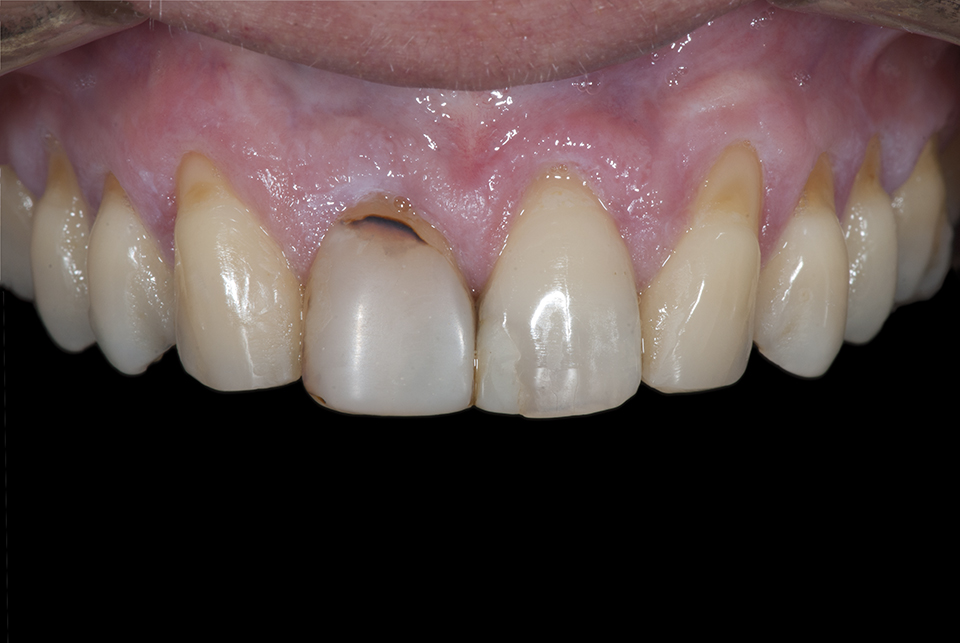
Gum Recession
Gum recession is one of the most common causes of exposed tooth roots. This condition occurs when the gum tissue surrounding the teeth wears away, pulling back and exposing more of the tooth or the tooth root. Gum recession can result from:
- Poor Oral Hygiene: Inadequate brushing and flossing can lead to plaque buildup, which hardens into tartar, causing the gums to recede. The bacteria in plaque and tartar can irritate and inflame the gums, a condition known as gingivitis. If left untreated, gingivitis can progress to periodontitis, a severe gum disease that damages the gum tissue and bone, leading to further gum recession and exposed tooth roots.
- Aggressive Brushing: Brushing your teeth too hard or using a toothbrush with hard bristles can wear down the gums. This mechanical trauma can cause the gums to recede, exposing the delicate tooth roots. It’s essential to use a soft-bristled toothbrush and gentle brushing techniques to protect your gums.
- Periodontal Disease: Advanced gum disease damages the gum tissue and bone, leading to recession. Periodontitis, in particular, can cause the gums to pull away from the teeth, creating pockets that harbor bacteria. As the disease progresses, these pockets deepen, and more gum tissue and bone are destroyed, exposing the tooth roots.
- Tobacco Use: Smoking or using other tobacco products can damage the gums, leading to recession. Tobacco use reduces blood flow to the gums, impairing their ability to heal and fight infections. This increases the risk of gum disease and subsequent gum recession.
- Hormonal Changes: Hormonal fluctuations, particularly in women, can make gums more sensitive and prone to recession. During puberty, pregnancy, and menopause, hormonal changes can affect the blood supply to the gums and their overall health, making them more susceptible to recession.
- Genetics: Some individuals are genetically predisposed to gum recession. If you have a family history of gum disease or gum recession, you may be at a higher risk of developing exposed tooth roots. Genetic factors can influence the strength and resilience of your gum tissue and bone structure.
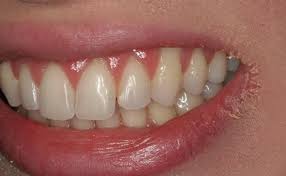
Trauma and Injury
Physical trauma to the mouth, such as sports injuries, accidents, or even biting down on hard objects, can damage the gums and lead to exposed tooth roots. Orthodontic treatments and improper dental procedures can also cause trauma, resulting in gum recession.
- Sports Injuries: Contact sports or activities with a high risk of falls can result in mouth injuries that damage the gums and expose tooth roots. Wearing a mouthguard during sports can help protect your teeth and gums from injury.
- Accidents: Accidents, such as falls or car accidents, can cause significant trauma to the mouth, leading to gum recession and exposed roots. Immediate dental care is crucial to assess and treat the damage.
- Biting Hard Objects: Habitually biting on hard objects like ice, pens, or fingernails can cause microtrauma to the gums, eventually leading to recession and exposed roots. Avoiding these habits can protect your gums and teeth.
- Orthodontic Treatments: Improper orthodontic treatments or excessive force during orthodontic procedures can cause gum recession. It’s essential to seek treatment from experienced orthodontists to minimize the risk of trauma to the gums.
- Dental Procedures: Some dental procedures, if not performed correctly, can cause gum recession. For example, poorly fitting dental restorations or crowns can irritate the gums and lead to recession. Ensure that you receive dental care from qualified professionals.
Misaligned Teeth
Teeth that are not properly aligned can place excessive force on the gums and bone, leading to recession and exposed roots. This condition often requires orthodontic treatment to correct the alignment and prevent further damage.
- Crowded Teeth: Crowded or overlapping teeth can make it difficult to maintain proper oral hygiene, increasing the risk of gum disease and recession. Orthodontic treatments such as braces or clear aligners can help align the teeth and reduce the risk of exposed roots.
- Crossbite and Overbite: Malocclusions like crossbite or overbite can create uneven pressure on the teeth and gums, leading to recession. Correcting these bite issues with orthodontic treatment can help prevent further damage.
- Teeth Grinding: Misaligned teeth can exacerbate bruxism (teeth grinding), putting additional pressure on the gums and causing recession. Addressing both the alignment and grinding issues is essential for protecting the gums.
Grinding and Clenching
Bruxism, the habit of grinding or clenching teeth, can put immense pressure on the teeth and supporting structures. Over time, this can cause gum recession and expose the tooth roots.
- Stress and Anxiety: Stress and anxiety are common triggers for bruxism. Managing stress through relaxation techniques, therapy, or lifestyle changes can help reduce teeth grinding.
- Sleep Disorders: Sleep disorders like sleep apnea can contribute to bruxism. Treating underlying sleep issues can alleviate grinding and protect the gums.
- Occlusal Guards: Wearing a custom-fitted occlusal guard (nightguard) can protect your teeth and gums from the effects of bruxism. These devices cushion the teeth and reduce the pressure on the gums.
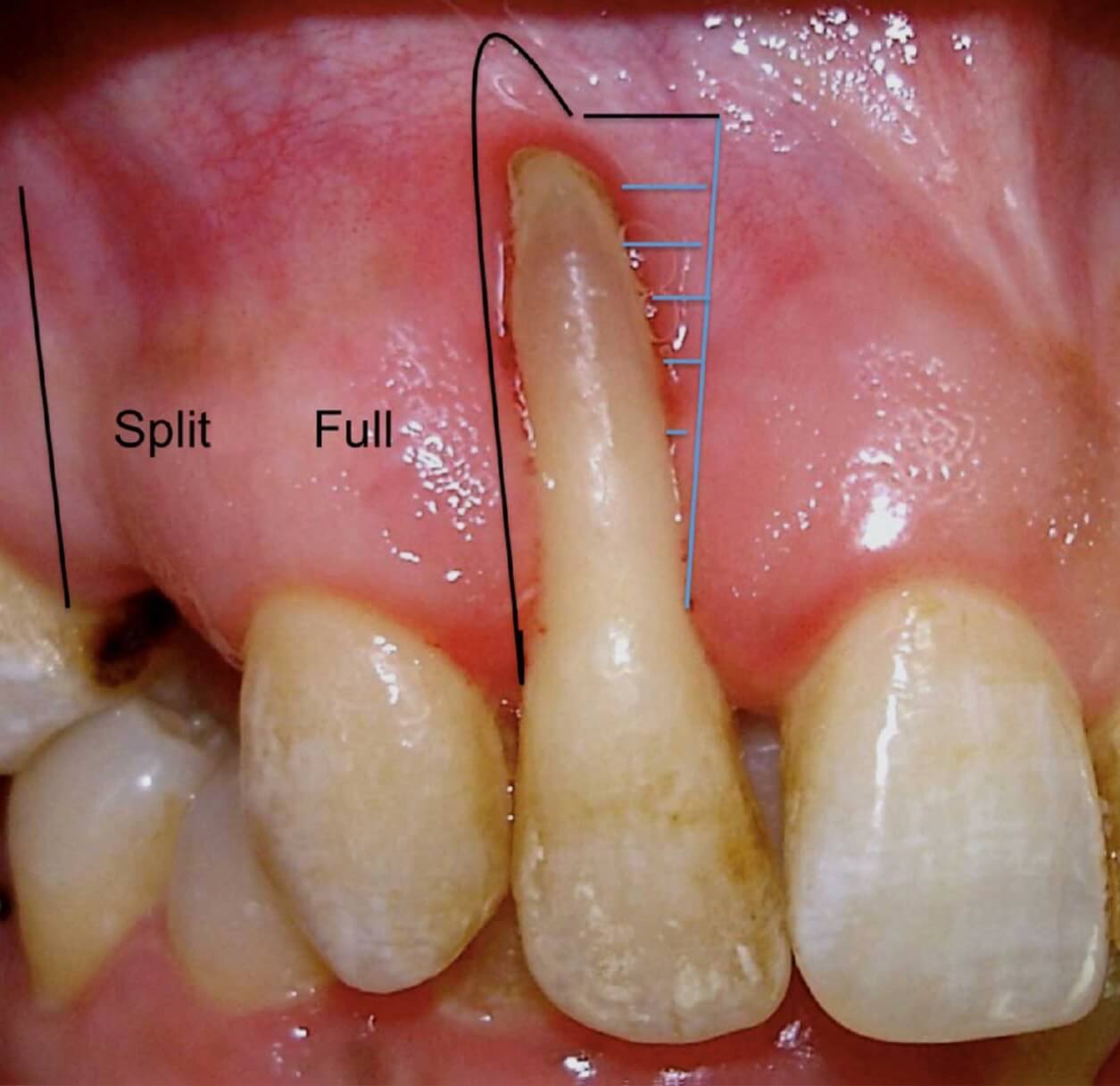
Symptoms of Exposed Tooth Roots
Recognizing the symptoms of exposed tooth roots is essential for seeking timely treatment. The symptoms can vary depending on the severity of the condition but commonly include:
- Tooth Sensitivity: Exposed tooth roots can cause increased sensitivity to hot, cold, sweet, or acidic foods and beverages. The sensitivity occurs because the exposed roots contain tiny tubules that lead directly to the tooth’s nerve center. When these tubules are exposed, external stimuli can easily reach the nerve, causing pain and discomfort.
- Visible Roots: You may notice that your teeth appear longer than usual, indicating gum recession. The exposed roots may be darker in color than the crowns of your teeth, making them more noticeable.
- Discomfort and Pain: Some individuals experience pain or discomfort, particularly when brushing or eating. The exposed roots can be more sensitive to mechanical pressure, making daily oral hygiene practices painful.
- Gum Inflammation: The gums around the exposed roots may become red, swollen, or tender. Inflammation can indicate an underlying infection or irritation that needs to be addressed.
- Decay and Cavities: Exposed roots are more susceptible to decay and cavities, leading to further dental issues. The cementum covering the roots is not as strong as enamel, making it more prone to decay.
- Bad Breath: Persistent bad breath can result from gum recession and the accumulation of bacteria in the exposed areas. Bacteria can thrive in the pockets created by gum recession, producing foul-smelling compounds.
Diagnosing Exposed Tooth Roots
A dentist can diagnose exposed tooth roots through a comprehensive examination that includes:
- Visual Inspection: The dentist will examine your gums and teeth for signs of recession and exposed roots. They will look for areas where the gums have pulled away from the teeth, exposing the roots.
- Dental X-Rays: X-rays can help assess the extent of gum recession and check for underlying bone loss. X-rays provide a detailed view of the bone structure and can reveal any bone loss that may contribute to gum recession.
- Periodontal Probing: This involves measuring the depth of the gum pockets to determine the severity of gum recession. The dentist uses a specialized instrument called a periodontal probe to measure the pocket depths around each tooth. Deeper pockets indicate more severe gum recession.
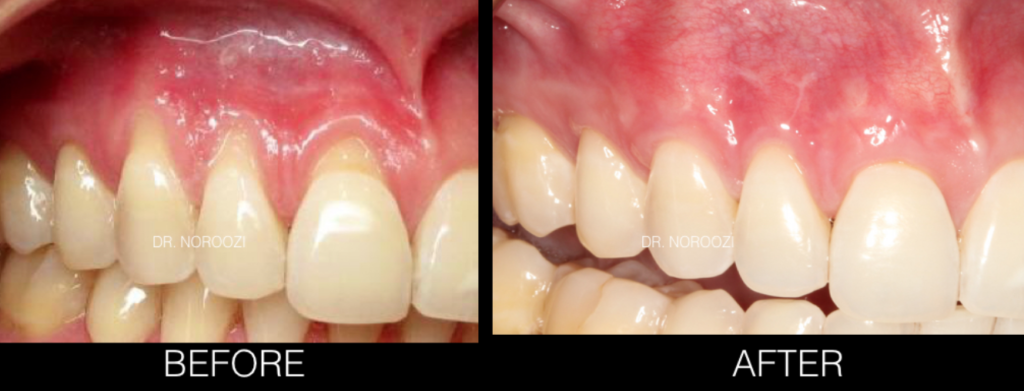
Treatment Options for Exposed Tooth Roots
Treating exposed tooth roots involves addressing the underlying cause and protecting the roots from further damage. Treatment options can range from conservative measures to surgical interventions.
Non-Surgical Treatments
- Improved Oral Hygiene: Maintaining good oral hygiene is crucial for preventing further gum recession. Use a soft-bristled toothbrush and fluoride toothpaste, and brush gently to avoid damaging the gums. Floss daily to remove plaque between the teeth.
- Brushing Technique: Brush your teeth using gentle, circular motions rather than aggressive back-and-forth scrubbing. This helps remove plaque without causing trauma to the gums.
- Flossing Technique: Use a gentle sawing motion to guide the floss between your teeth and curve it around each tooth to remove plaque from the gumline.
- Mouthwash: Consider using an antimicrobial mouthwash to reduce bacteria and plaque buildup, promoting healthier gums.
- Desensitizing Toothpaste: Toothpaste designed for sensitive teeth can help reduce sensitivity associated with exposed tooth roots. These toothpastes contain compounds that block the transmission of sensation from the tooth surface to the nerve.
- Potassium Nitrate: This ingredient helps to calm the nerves inside the tooth, reducing sensitivity.
- Stannous Fluoride: This compound forms a protective barrier over the exposed dentin, reducing sensitivity and protecting against decay.
- Fluoride Treatments: Your dentist may recommend fluoride treatments to strengthen the tooth enamel and reduce sensitivity. Fluoride helps to remineralize the enamel and can reduce the risk of decay on exposed roots.
- Topical Fluoride: Fluoride varnish or gel can be applied directly to the teeth during a dental visit to strengthen enamel and reduce sensitivity.
- Fluoride Rinse: Your dentist may recommend using a fluoride rinse at home to provide ongoing protection.
- Bonding: Dental bonding involves applying a tooth-colored resin to the exposed roots, providing a protective barrier and improving aesthetics. Bonding can also help reduce sensitivity by covering the exposed tubules.
- Application Process: The dentist applies a conditioning liquid to the tooth surface, followed by the resin material. The resin is then shaped and hardened using a special light.
- Benefits: Bonding is a quick and minimally invasive procedure that can effectively protect exposed roots and improve the appearance of your teeth.
Surgical Treatments
- Gum Grafting: Gum grafting is a surgical procedure that involves taking tissue from another part of your mouth (or using donor tissue) and attaching it to the affected area. This helps cover the exposed roots and promotes gum regeneration.
- Connective Tissue Graft: The most common type of gum graft, where tissue is taken from beneath the surface of the roof of your mouth and stitched over the exposed root.
- Free Gingival Graft: Tissue is taken directly from the roof of your mouth and placed on the affected area. This method is often used for patients with thin gums.
- Pedicle Graft: Tissue is taken from the gum near the exposed root and repositioned to cover the root. This method is suitable for patients with plenty of gum tissue near the affected area.
- Pinhole Surgical Technique: This minimally invasive procedure involves making a small hole in the gum tissue and gently repositioning it to cover the exposed roots. It offers a quicker recovery time compared to traditional gum grafting.
- Procedure: The dentist creates a small pinhole in the gum tissue and uses specialized instruments to loosen and reposition the gums over the exposed roots.
- Benefits: The pinhole technique is less invasive, requires fewer sutures, and has a shorter recovery period.
- Pocket Depth Reduction: Also known as flap surgery, this procedure involves folding back the gums, removing bacteria and tartar, and securing the gum tissue in place to reduce pocket depth and cover exposed roots.
- Procedure: The dentist makes small incisions in the gums to lift them away from the teeth, allowing access to the roots for cleaning. The gum tissue is then repositioned and stitched in place.
- Benefits: This procedure helps reduce the depth of gum pockets, making it easier to clean and maintain oral hygiene. It also promotes healing and reduces the risk of further gum recession.
Preventing Exposed Tooth Roots
Preventing exposed tooth roots requires a proactive approach to oral health and addressing risk factors. Here are some preventive measures:
- Practice Good Oral Hygiene: Brush twice a day, floss daily, and use mouthwash to keep your teeth and gums healthy. Regular dental check-ups and cleanings are also essential.
- Routine Check-Ups: Visit your dentist at least twice a year for professional cleanings and exams. Regular check-ups allow your dentist to monitor your gum health and catch any issues early.
- Professional Cleanings: Dental cleanings remove plaque and tartar buildup that cannot be eliminated through regular brushing and flossing. This helps prevent gum disease and recession.
- Use a Soft-Bristled Toothbrush: Choose a toothbrush with soft bristles and avoid brushing too hard to protect your gums.
- Electric Toothbrush: Consider using an electric toothbrush with a pressure sensor to ensure you are not brushing too hard.
- Replace Your Toothbrush: Replace your toothbrush every three to four months, or sooner if the bristles are frayed. Worn bristles can be harsh on your gums.
- Wear a Mouthguard: If you grind or clench your teeth, especially at night, wearing a mouthguard can protect your teeth and gums.
- Custom-Fitted Mouthguard: A custom-fitted mouthguard from your dentist provides the best protection and comfort. Over-the-counter mouthguards may not fit as well and can be less effective.
- Address Orthodontic Issues: Seek orthodontic treatment if you have misaligned teeth to prevent excessive pressure on the gums.
- Braces or Clear Aligners: Orthodontic treatments like braces or clear aligners can help align your teeth and reduce the risk of gum recession.
- Retainers: After orthodontic treatment, wearing a retainer as prescribed by your orthodontist helps maintain the alignment and prevent relapse.
- Avoid Tobacco Products: Quit smoking and avoid using other tobacco products to maintain healthy gums.
- Smoking Cessation Programs: Seek support through smoking cessation programs, counseling, or medications to help you quit smoking.
- Healthy Alternatives: Replace smoking with healthier habits like exercise, hobbies, or spending time with friends and family.
- Manage Health Conditions: Control conditions like diabetes and hormonal imbalances that can affect gum health.
- Diabetes Management: Keep your blood sugar levels under control through medication, diet, and regular monitoring. High blood sugar can increase the risk of gum disease.
- Hormonal Health: Work with your healthcare provider to manage hormonal changes that can impact your gum health. Regular check-ups and monitoring can help address any issues early.
Long-Term Outlook and Maintenance
The long-term outlook for individuals with exposed tooth roots depends on the severity of the condition and the effectiveness of the treatment. With proper care and maintenance, it is possible to manage symptoms, prevent further damage, and maintain good oral health.
- Regular Dental Visits: Continue to visit your dentist regularly for check-ups and cleanings. Your dentist can monitor your condition and recommend additional treatments if necessary.
- Periodontal Maintenance: If you have had periodontal treatment, your dentist may recommend more frequent cleanings and check-ups to maintain your gum health.
- Monitoring: Regular dental visits allow your dentist to monitor the health of your gums and detect any early signs of recession or other issues.
- Maintain Good Oral Hygiene: Consistently practice good oral hygiene to prevent plaque buildup and gum recession.
- Daily Routine: Brush your teeth twice a day, floss daily, and use an antimicrobial mouthwash as recommended by your dentist.
- Proper Technique: Use gentle brushing and flossing techniques to avoid damaging your gums.
- Follow Post-Treatment Instructions: If you undergo surgical treatment, follow your dentist’s post-treatment instructions carefully to ensure proper healing and success.
- Post-Surgical Care: Follow your dentist’s instructions for post-surgical care, including taking prescribed medications, avoiding certain foods, and maintaining good oral hygiene.
- Healing Period: Allow time for proper healing after surgical treatments. Avoid strenuous activities and follow a soft diet as recommended by your dentist.
- Healthy Lifestyle: Adopt a healthy lifestyle to support your overall oral health.
- Balanced Diet: Eat a balanced diet rich in vitamins and minerals that promote healthy gums. Include foods high in vitamin C, calcium, and antioxidants.
- Hydration: Stay hydrated to maintain good oral health. Water helps wash away food particles and bacteria, promoting healthy gums.
Conclusion
Exposed tooth roots can be a painful and concerning dental issue, but with the right approach, it is possible to manage and treat the condition effectively. By understanding the causes, recognizing the symptoms, and seeking appropriate treatment, you can protect your oral health and maintain a beautiful, pain-free smile. Regular dental care and preventive measures are key to avoiding exposed tooth roots and ensuring long-term dental well-being.
What do I do if my tooth root is exposed?
When you realize your tooth root is exposed, it’s crucial to address the issue promptly to prevent further complications. Here’s a detailed guide on what steps to take:
- Consult a Dentist Immediately: The first and most important step is to see a dentist as soon as possible. An exposed tooth root is a serious dental issue that requires professional evaluation and treatment.
- Maintain Oral Hygiene: Until you can see a dentist, continue to brush your teeth gently with a soft-bristled toothbrush and use a toothpaste designed for sensitive teeth. This helps prevent plaque buildup, which can exacerbate the problem.
- Avoid Certain Foods and Drinks: Refrain from consuming acidic, sugary, or very hot and cold foods and beverages. These can aggravate the exposed root and increase sensitivity and pain.
- Use Desensitizing Products: Over-the-counter desensitizing toothpaste or mouthwash can help reduce discomfort. Look for products containing potassium nitrate or stannous fluoride, which can help manage sensitivity.
- Saltwater Rinse: Rinse your mouth with a warm saltwater solution to reduce inflammation and kill bacteria. Mix one teaspoon of salt in a glass of warm water and swish it around your mouth for 30 seconds.
- Pain Relief: Over-the-counter pain relievers, such as ibuprofen or acetaminophen, can help manage pain until you receive professional care.
How do you treat an exposed nerve root tooth?
Treating an exposed nerve root involves several potential approaches, depending on the severity and cause of the exposure:
- Dental Bonding: For minor exposures, a dentist may apply a tooth-colored resin to cover the exposed area and protect the nerve. This is a quick and non-invasive procedure.
- Fluoride Treatment: Dentists often apply fluoride varnish to the exposed root to strengthen the enamel and reduce sensitivity. Regular fluoride treatments can help remineralize the tooth surface.
- Gum Grafting: If gum recession has caused the exposure, a gum graft may be necessary. This surgical procedure involves taking tissue from another part of your mouth (or using donor tissue) and attaching it to the receded area to cover the root.
- Root Canal Therapy: If the nerve is infected or severely damaged, a root canal may be required. This involves removing the infected or damaged nerve and sealing the tooth to prevent further infection.
- Crown or Cap: In some cases, a dentist may place a crown or cap over the tooth to protect it and restore its function and appearance.
- Antibiotics: If an infection is present, antibiotics may be prescribed to eliminate the bacteria and prevent further complications.
Is an exposed tooth root an emergency?
An exposed tooth root can be considered a dental emergency in many cases due to the potential for severe pain, infection, and further dental damage. Here are key points to consider:
- Severity of Pain: If the exposed root is causing severe pain that affects your ability to eat, speak, or sleep, it’s essential to seek immediate dental care.
- Risk of Infection: An exposed root is vulnerable to bacterial infection, which can lead to more serious conditions such as an abscess. Signs of infection include swelling, pus, and fever, and these symptoms warrant urgent attention.
- Extent of Damage: If the exposure is due to trauma or significant gum recession, it’s crucial to address the underlying cause promptly to prevent further damage to the tooth and surrounding structures.
- Long-Term Consequences: Leaving an exposed root untreated can lead to further dental issues, including tooth decay, increased sensitivity, and eventual tooth loss. Early intervention can prevent these complications.
Can a damaged tooth root heal itself?
A damaged tooth root cannot heal itself because dental tissues, unlike some other tissues in the body, do not regenerate. However, the damage can be managed and treated to restore function and prevent further issues. Here’s what you need to know:
- Professional Treatment: Dental interventions such as root canal therapy, dental crowns, or bonding can address the damage and protect the tooth from further harm.
- Maintenance: After treatment, maintaining excellent oral hygiene and regular dental check-ups are crucial to ensure the longevity of the repair and prevent future issues.
- Preventive Care: Using fluoride treatments and desensitizing toothpaste can help protect your teeth and prevent additional damage to other roots.
Are exposed roots painful?
Yes, exposed roots can be quite painful due to several factors:
- Sensitivity: The root of the tooth is not covered by enamel and is directly connected to the nerve, making it extremely sensitive to temperature changes and pressure.
- Irritation: Exposed roots are susceptible to irritation from acidic or sugary foods and beverages, which can exacerbate the pain.
- Inflammation: The exposure can lead to inflammation of the surrounding gum tissue, adding to the discomfort.
- Infection: If bacteria enter the exposed area, it can lead to infection, causing pain, swelling, and potentially an abscess.
Is it safe to leave a tooth root in?
Leaving an exposed tooth root untreated is not safe due to several risks:
- Infection: An exposed root is highly susceptible to bacterial infection, which can spread and cause serious dental and health issues.
- Tooth Decay: Without the protective enamel, the exposed root can quickly develop cavities, leading to further dental decay.
- Gum Disease: The exposure can exacerbate gum recession and contribute to periodontal disease, which can result in tooth loss and damage to the jawbone.
- Increased Sensitivity: Over time, the sensitivity and pain associated with an exposed root can worsen, making it difficult to eat and drink comfortably.
In summary, addressing an exposed tooth root promptly with professional dental care is essential to prevent further complications and ensure oral health.
How to fix an exposed tooth nerve at home?
Fixing an exposed tooth nerve at home is not a substitute for professional dental care, but there are steps you can take to manage the symptoms temporarily until you can see a dentist:
- Rinse with Saltwater: A warm saltwater rinse can help reduce inflammation and cleanse the mouth. Mix one teaspoon of salt in a glass of warm water and rinse your mouth several times a day.
- Use Desensitizing Toothpaste: Over-the-counter desensitizing toothpaste can help alleviate sensitivity and pain. These toothpastes contain ingredients like potassium nitrate that help block pain signals to the nerve.
- Apply Clove Oil: Clove oil has natural analgesic and antiseptic properties. Dip a cotton swab in clove oil and apply it directly to the exposed area for temporary pain relief.
- Over-the-Counter Pain Relievers: Non-prescription pain medications like ibuprofen or acetaminophen can help manage pain and reduce inflammation.
- Avoid Triggers: Stay away from hot, cold, sugary, or acidic foods and drinks that can aggravate the exposed nerve.
- Maintain Oral Hygiene: Continue to brush gently with a soft-bristled toothbrush and floss carefully to avoid irritating the exposed nerve.
Can an exposed nerve heal itself?
No, an exposed nerve cannot heal itself. Once the nerve is exposed, professional dental intervention is necessary to treat the underlying cause and protect the nerve. Here’s why:
- Permanent Damage: Dental tissues do not regenerate in the same way as other body tissues. The exposure of the nerve usually indicates underlying damage that cannot repair itself naturally.
- Risk of Infection: An exposed nerve is at high risk for bacterial infection, which can lead to more serious dental problems like abscesses and tooth loss.
- Professional Treatment: Dentists can provide treatments such as fillings, crowns, root canals, or gum grafts to cover and protect the exposed nerve, addressing the cause of the exposure and preventing further damage.
How painful is an exposed tooth nerve?
An exposed tooth nerve is typically very painful due to several factors:
- High Sensitivity: The nerve is extremely sensitive to temperature changes, pressure, and certain foods and drinks. This can cause sharp, intense pain that can be constant or triggered by specific stimuli.
- Inflammation: The exposure can lead to inflammation of the surrounding tissues, which adds to the pain and discomfort.
- Infection: If the exposed nerve becomes infected, the pain can increase significantly and may be accompanied by swelling, pus, and other symptoms of infection.
Will a tooth root come out on its own?
A tooth root generally will not come out on its own without intervention. Here are key points to consider:
- Stability: Even if the tooth crown is damaged or lost, the root often remains embedded in the jawbone and is not likely to come out without professional extraction.
- Potential Complications: Leaving a damaged or exposed root untreated can lead to complications such as infection, gum disease, and further damage to surrounding teeth and bone.
- Professional Extraction: Dentists can safely and effectively remove a tooth root if necessary, ensuring that the procedure is done correctly and that any underlying issues are addressed.
Will pulling a tooth stop nerve pain?
Pulling a tooth can stop nerve pain if the nerve within that specific tooth is the source of the pain. However, there are important considerations:
- Professional Extraction: Tooth extraction should always be performed by a dentist to ensure that it is done safely and to prevent complications such as infection or damage to surrounding teeth.
- Underlying Issues: The dentist will assess whether the tooth can be saved with treatments such as a root canal or crown before opting for extraction. Preserving the tooth is often preferable if possible.
- Post-Extraction Care: After extraction, proper care is essential to ensure healing and prevent infection. The dentist will provide specific instructions for aftercare.
How to stop tooth root decay?
Preventing and stopping tooth root decay involves a combination of professional dental care and diligent oral hygiene practices:
- Regular Dental Check-ups: Visit your dentist regularly for check-ups and cleanings. Early detection of decay can prevent it from progressing.
- Fluoride Treatments: Professional fluoride treatments can strengthen tooth enamel and help prevent decay. Your dentist may also recommend fluoride toothpaste or mouthwash.
- Good Oral Hygiene: Brush at least twice a day with fluoride toothpaste, floss daily, and use an antibacterial mouthwash to reduce plaque and bacteria.
- Healthy Diet: Limit sugary and acidic foods and drinks, as they can contribute to tooth decay. Instead, eat a balanced diet rich in fruits, vegetables, and dairy products.
- Gum Health: Keep your gums healthy by brushing gently along the gum line and using interdental brushes or floss to clean between teeth. Healthy gums help protect the roots of your teeth.
- Sealants: In some cases, dental sealants can be applied to protect the exposed roots from decay.
By following these steps, you can effectively manage and prevent tooth root decay, ensuring long-term dental health.


